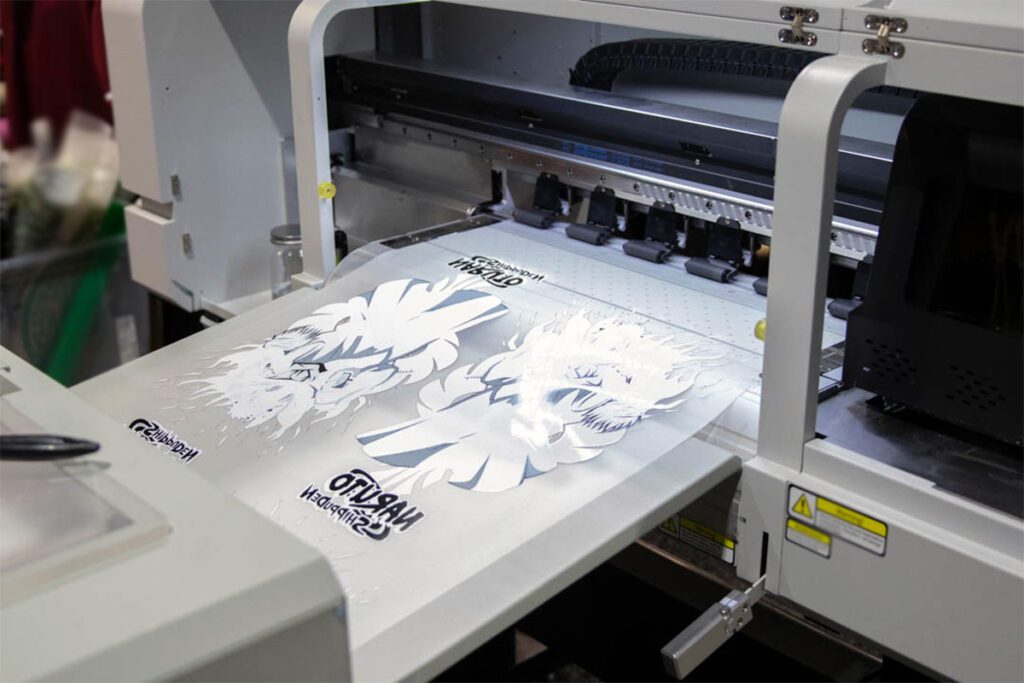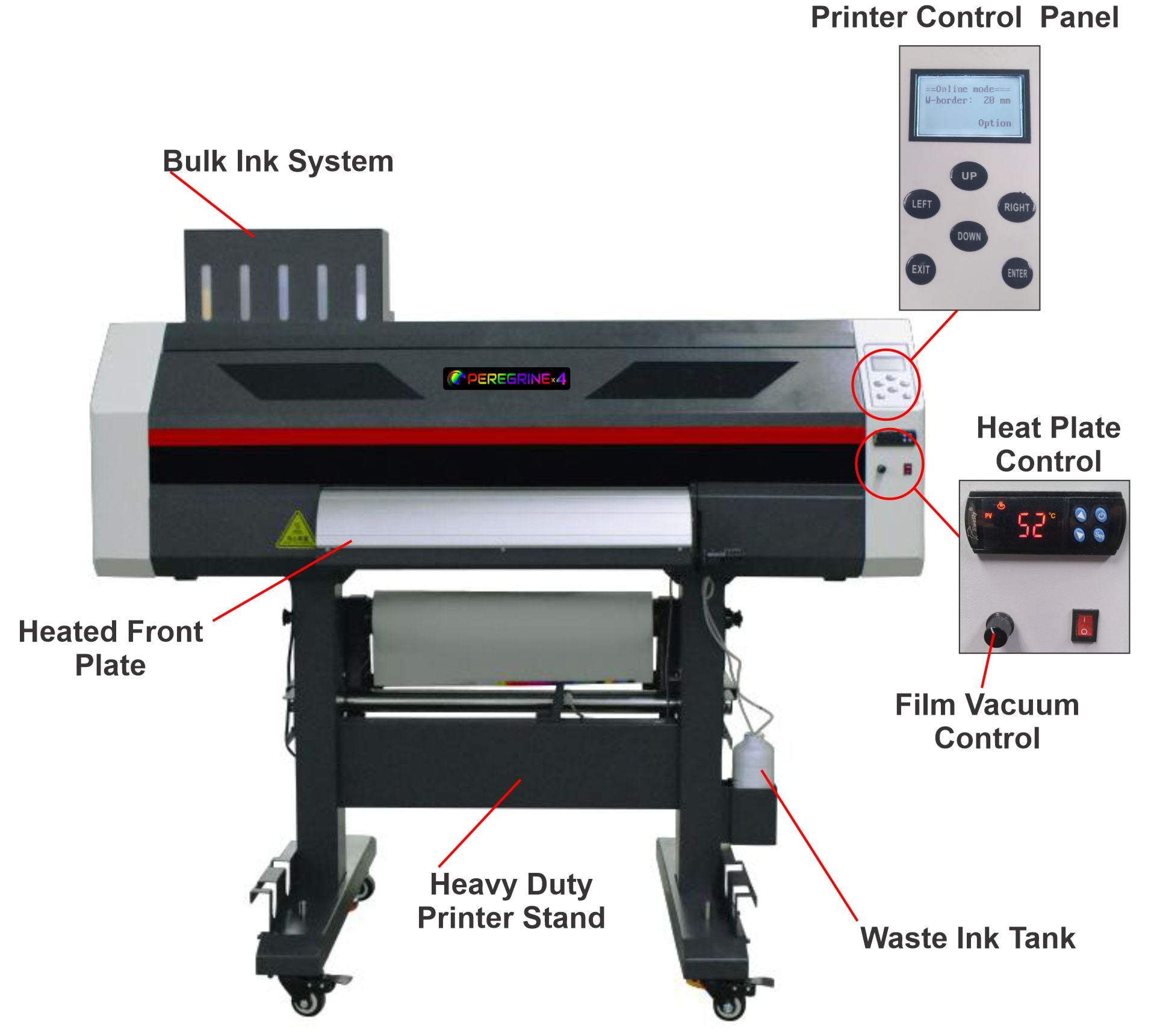A Deep Dive into DTF Printing: Methods, Benefits, and Industry Applications
A Deep Dive into DTF Printing: Methods, Benefits, and Industry Applications
Blog Article
The Future of Fashion: Discovering DTF Printing Innovation in the Textile Market
Among these developments, Straight to Movie (DTF) printing modern technology has actually arised as a promising contender, providing special capacities and possibilities for developers and manufacturers alike. This cutting-edge printing method has stimulated rate of interest due to its prospective to reinvent traditional fabric printing processes.
Development of Fabric Printing
From the ancient civilizations making use of methods like block printing to the digital change of today, textile printing has actually constantly pushed limits. As the craft spread to other components of the world, new approaches such as screen printing and roller printing arised during the Industrial Revolution, changing the textile industry.
In the 20th century, innovations in innovation resulted in the growth of rotary display printing, permitting faster and much more intricate styles. The introduction of electronic textile printing in the late 20th century marked a significant change towards even more sustainable and flexible printing approaches. Today, with advancements like Direct-to-Fabric (DTF) printing technology, designers can develop dynamic, detailed prints with higher performance and decreased ecological impact. The advancement of textile printing showcases a rich background of creativity, ingenuity, and technical progress worldwide of style and style.
Advantages of DTF Technology
With the development of fabric printing strategies from ancient methods like block printing to contemporary innovations such as digital printing, the introduction of Direct-to-Fabric (DTF) modern technology has actually considerably improved the performance and sustainability of textile printing processes. One of the main advantages of DTF modern technology is its capacity to directly print designs onto material without the requirement for transfer documents, which reduces waste and simplifies the production process. Furthermore, DTF printing permits better shade vibrancy and detail precision compared to standard techniques, allowing fabric makers to develop detailed and premium layouts effortlessly.
Furthermore, DTF technology is known for its versatility, as it can be used on various types of fabrics, including natural fibers like cotton, silk, and wool, as well as artificial materials such as polyester and nylon (DTF Printing). This versatility opens a vast array of opportunities for developers and manufacturers to explore different textures and products, bring about more special and ingenious products in the garment industry. Overall, the execution of DTF innovation stands for a considerable development in fabric printing, providing numerous benefits that contribute to the future sustainability and creative thinking of the market
Sustainability in vogue Production
Stressing green methods is extremely important in contemporary style production, straightening with the growing customer demand for lasting items. In recent years, the fashion business has actually faced boosting scrutiny because of its substantial environmental influence, including extreme water use, chemical pollution, and fabric waste. As a response, numerous style brands are now including lasting methods into their manufacturing procedures to minimize damage to the setting.
Sustainability in vogue production incorporates numerous aspects, such as utilizing recycled and organic materials, lowering energy consumption, carrying out moral labor practices, and promoting transparency throughout the supply chain. In addition, advancements in innovation, like DTF printing, deal possibilities useful reference to even more improve sustainability in fabric production. This modern technology enables accurate printing on materials, lowering ink wastefulness and water use contrasted to traditional printing methods.
Style Flexibility and Personalization

In addition, this website DTF printing promotes modification on a range previously unattainable, enabling individualized garments and special pieces customized to private preferences. Customers can currently actively take part in the style process, creating garments that mirror their design and character. This personalization not only boosts the customer experience but additionally promotes a feeling of exclusivity and originality in a market saturated with mass-produced garments. On the whole, DTF printing technology reinvents the design landscape in the textile market, offering endless opportunities for creative expression and personalized style.
Influence On Supply Chain & Market Trends
DTF printing technology in the textile market is reshaping supply chain characteristics and affecting market fads via its performance and personalization capacities. By making it possible for on-demand printing and removing the need for large inventories, DTF technology improves the supply chain process. Producers can create products as needed, decreasing waste and storage expenses. This just-in-time production model also permits quicker reaction to market demands and trends, leading to a like it more receptive and dexterous supply chain.
Additionally, the customization capacity of DTF printing technology is reinventing the market trends in the fabric industry. As a result, DTF modern technology is driving a shift in the direction of more innovative and customer-centric methods within the fabric industry, shaping the future of style.

Verdict
To conclude, DTF printing modern technology is transforming the fabric sector by providing countless benefits such as style liberty, customization, and sustainability. This ingenious modern technology is improving the future of fashion production, affecting supply chains, and driving market patterns in the direction of more green and efficient practices. As the market remains to progress, DTF printing will certainly play an essential role in shaping the method textiles are created and eaten in the years ahead.
From the old human beings using techniques like block printing to the digital change of today, fabric printing has actually consistently pressed borders. As the craft spread to various other components of the world, new methods such as screen printing and roller printing emerged throughout the Industrial Change, changing the fabric market.
The introduction of digital textile printing in the late 20th century noted a substantial change towards more sustainable and versatile printing techniques.With the development of textile printing strategies from old techniques like block printing to contemporary innovations such as electronic printing, the introduction of Direct-to-Fabric (DTF) technology has significantly boosted the effectiveness and sustainability of textile printing procedures (DTF Printing).In action to the crucial change towards sustainability in fashion manufacturing, the adoption of innovative technologies like DTF printing not just addresses environmental problems yet likewise opens up methods for unmatched style freedom and modification in the textile sector
Report this page